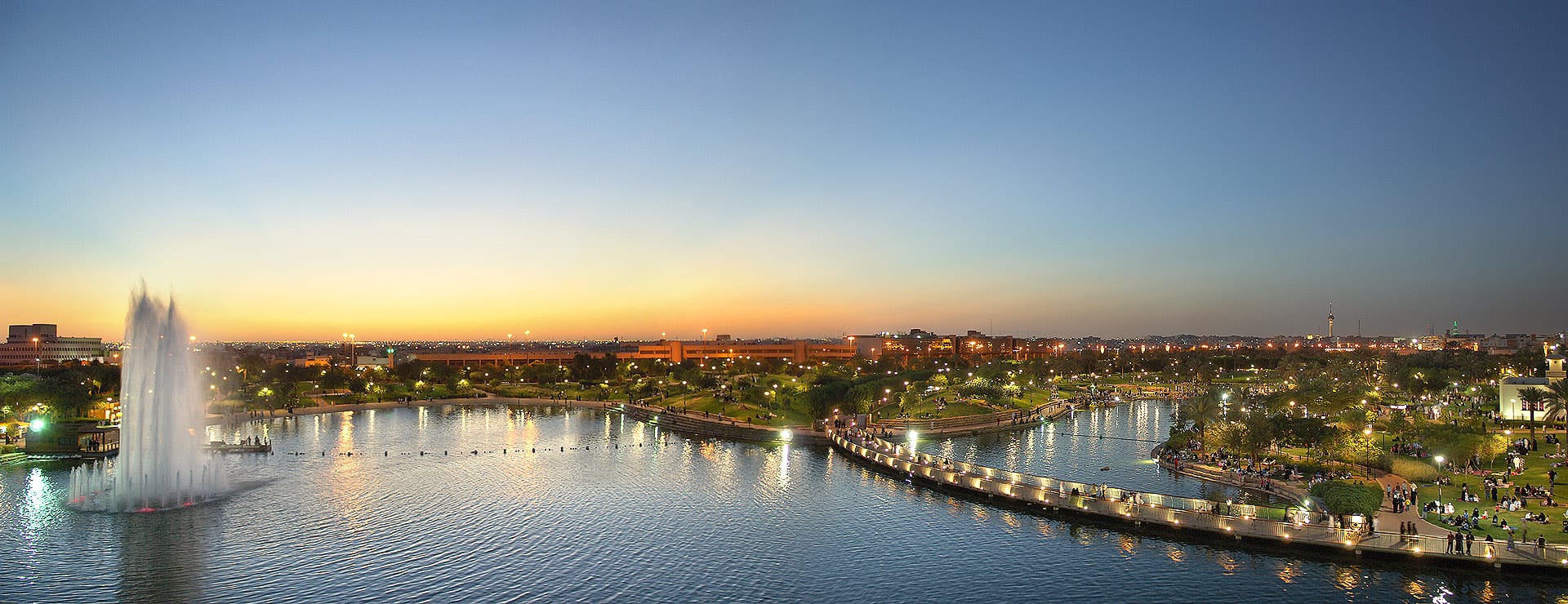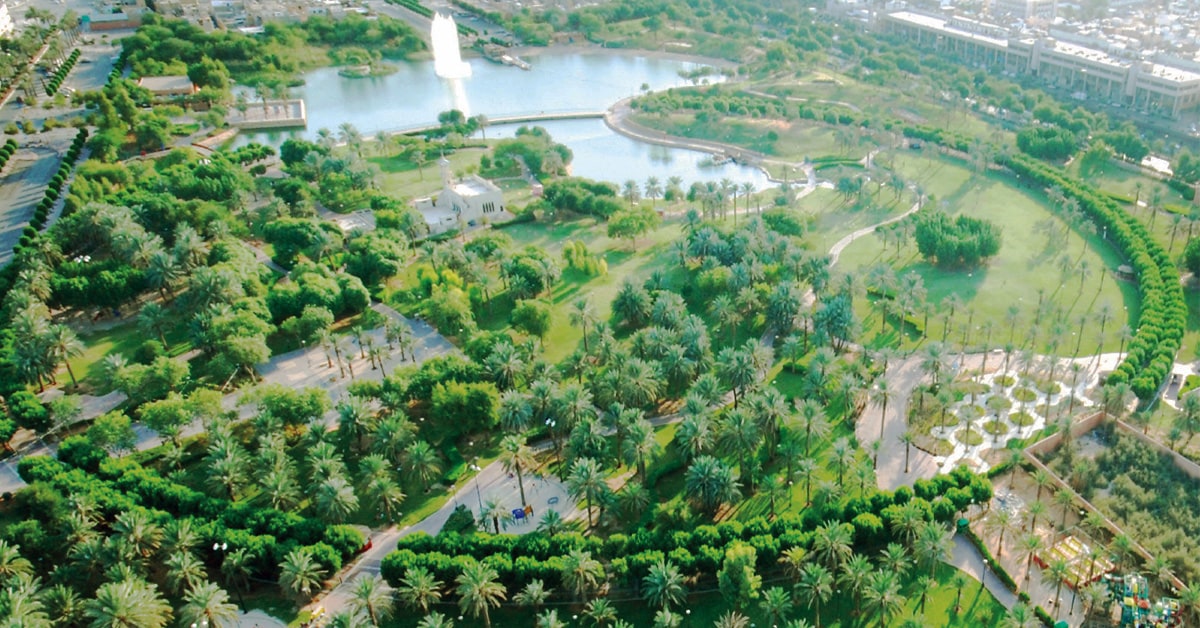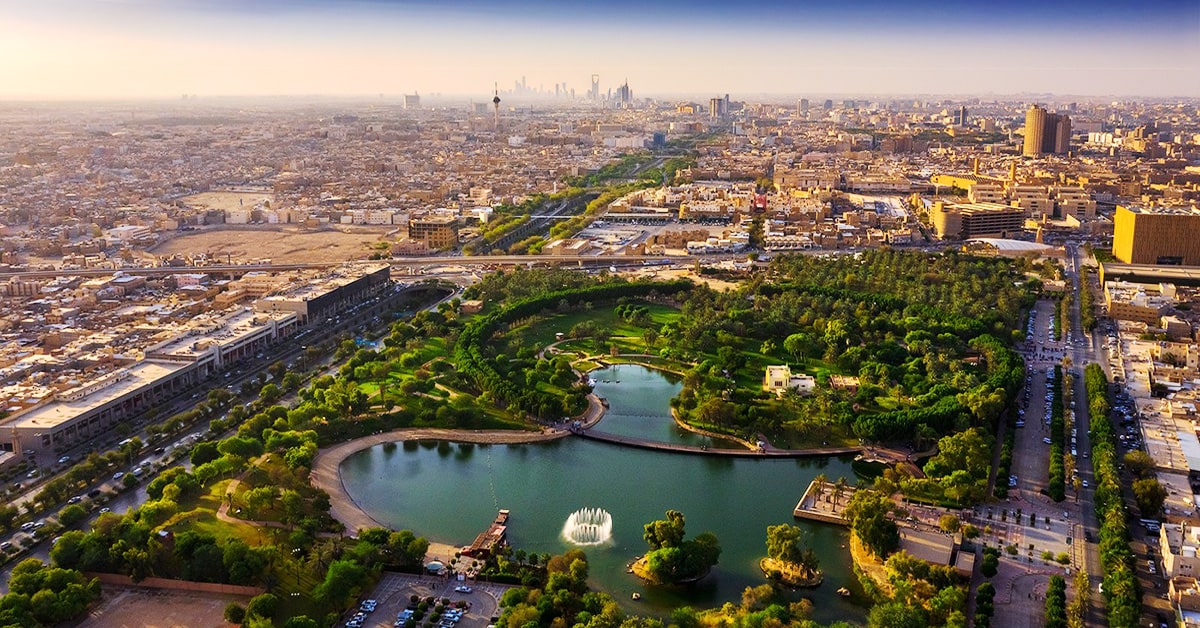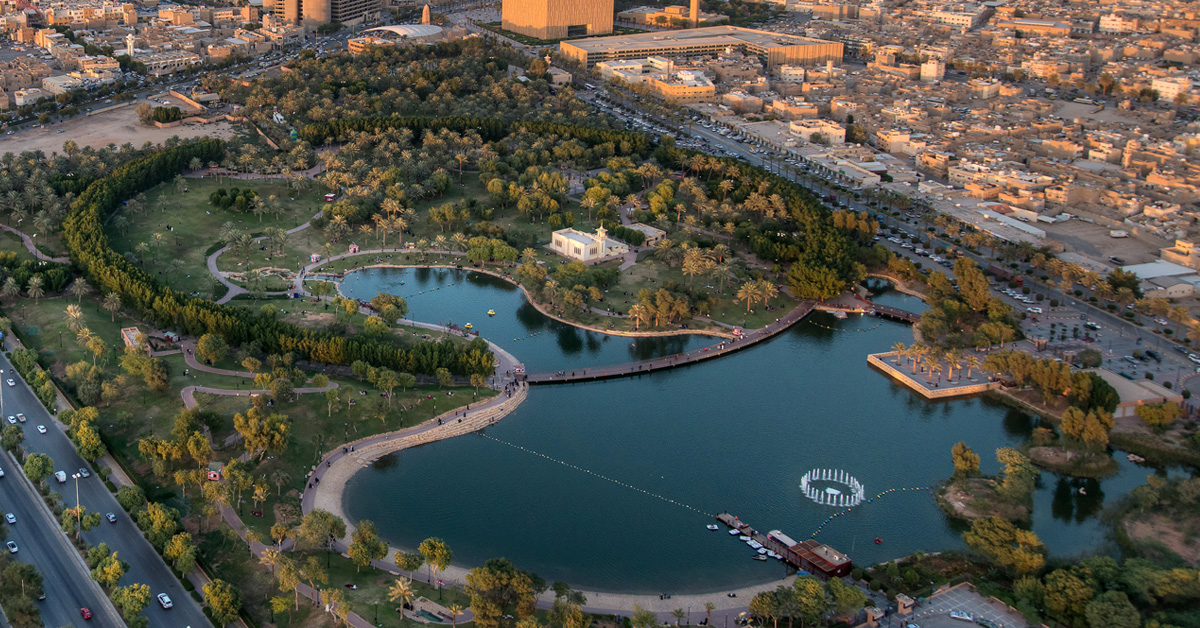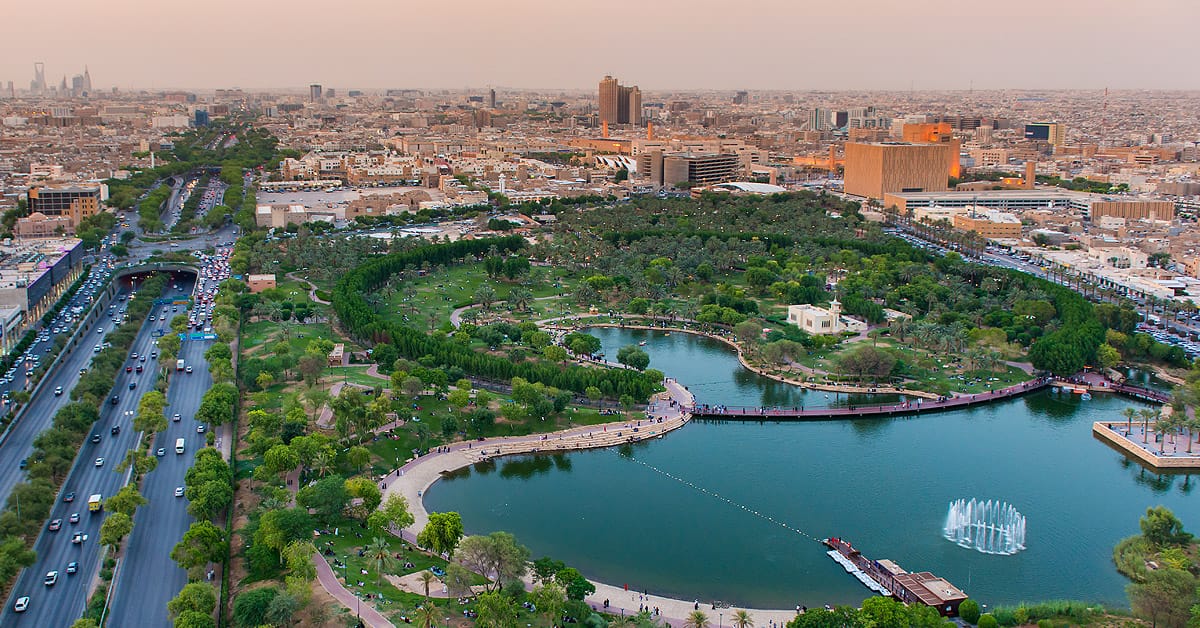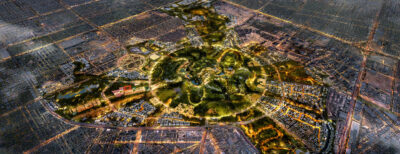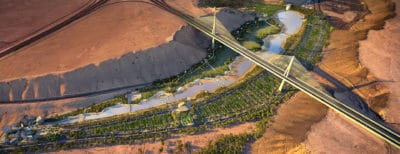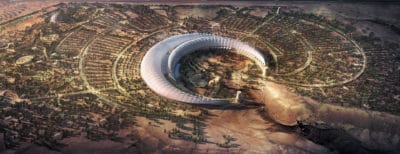Located in the dense central district of Riyadh, Salam Park has become a unique and popular urban destination that attracts over 780,000 visitors each year. The Park capitalizes on its large size (25 hectares), its verdant beauty, its natural features, and its convenient location. It provides a diverse range of cultural and recreational activities for all Riyadh’s residents of any age, gender, or nationality. The park is also a means of enhancing the urban environment, helping to offset pollution and conserving the city’s water supply.
The design concept integrates – into the new park – existing historic monuments that date back to the foundation era of the modern Saudi state. Moreover, the design gives great consideration to local cultural and environmental parameters. The careful selection of local materials and a familiar soft form language ensure that this park (for Riyadh a ‘non-typical green space’) did not appear as a foreign body in its environment.
The success of the park is surely based on the excellent strategic location, but the basis of public acceptance are the well balanced concept, robust detailing, and an elaborate strategy in terms of long term maintenance and management.
The design of the park has been a joint effort between Omrania & Associates and the British multi-disciplinary company Aukett Associates.
With a total area of 248,000m², the Park offers manifold attractions, generous green spaces, groves, play areas, sports fields, walkways, jogging track, bridges, public facilities, picnic areas, resting places, 3 accessible entrances, a mosque, and a magnificent lake with boat rides and a beautiful fountain.

Salam Park – Top View Aerial Image – Photo © Arriyadh Development Authority
The Park comprises of several different environments. There are 4 main zones: a Palm Grove, Hillside Zone, the lake area, and an Ecological Zone.
The Lake area
As a main feature of the Park, an artificial lake has been created (area 33,000 m², max. depth 4.5 m, covers 13% of the site). The Lake has a zone for boating and similar activities, plus a separate zone to accommodate the natural life of local and migrating birds. Visitors can admire both zones from a roofed footpath around the lake. This path is one kilometer long and 10 meters wide.
The highlight of the lake area is without a doubt the fountain. Circular arranged jets blow water up to 40 m high in vertical streams. This exciting visual feature is also staged by a colorful lighting concept and rhythmic performance. The water jet acts as an aerator to the water encouraging plant and fish propagation.
The lake acts as a reservoir for irrigation of parts of the park softscape. The lake is fed by sewage and underground water which is treated by a nearby reverse osmosis plant. The extract of ground water to supply the lake serves to alleviate hydrostatic pressure on tunnels and other sub-structures along the adjacent King Fahad Road resulting from the high ground water table.
Many measures were taken to ensure the continuous movement of lake water and to prevent insect and mosquito growth as well as to avoid the growth of bryophytes. These measures include R.O. Plant, Sand Filters, U.V. transponders, fountains, flow makers pumps to create continuous water current, and plantations that limit the growth of bryophytes as well as fish.
The Palm Grove
The northern part of the park is developed over a traditional farm, featuring some 1,300 beautiful date-palms, both natural and planted. The historic palm tree population has been integrated and increased upon. Thanks to the trees’ height and density, the visitors can enjoy the freedom to choose shaded places to sit without needing specially enclosed constructions for family privacy. Enriched by playgrounds and a children’s horse riding farm, families find this to be an attractive spot to rest and to entertain.
The Hillside Zone
The central area of the park has been shaped into a dynamic and interesting rolling landscape using the excavation material of the lake. This area is covered by a large lawn area that is mostly popular in the evenings, where people enjoy the views over the lake and the parkland. Traversed by two kinds of paths, people are encouraged to either stroll along the sinuous path network, or to walk at pace and jog along the broader circular avenue framed by shading deciduous trees. The circular corridor is completed by a beautiful, simple and modern designed bridge.
The Ecological Zone
The south-eastern corner of the lake provides a natural habitat for flora and fauna. The public access to the conservation area is restricted for visitors to allow plants and animals to develop free of any human impact.








